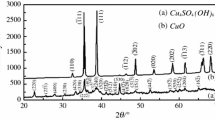Abstract
In this paper, a closed form analytical approach for a recently presented kinetic model proposed in Milani and Milani (Polym Test, 2013, under review) to interpret NR sulphur vulcanization in presence of either experimental or surrogate rheometer curves is proposed. The model has kinetic base and is aimed at predicting, by means of a very refined approach, the vulcanization degree of NR vulcanized with sulphur. It needs as input only rheometer curves to fit and provides as output kinetic constants of the single reactions occurring during the crosslink process. In Milani and Milani (Polym Test, 2013, under review) a cure chemical scheme constituted by five reactions occurring in series and parallel was adopted. The chemical scheme, translated mathematically into a differential equations system, was suitably re-arranged and a single analytical equation was derived, representing rubber crosslink degree evolution upon time. The main drawback of such procedure is that the five kinetic constants corresponding to each reaction were determined through a standard non-linear least squares procedure, trying to minimize the deviation of the analytical cure curve from experimental data. Such a limitation is here superseded and a major improvement is proposed utilizing (1) a closed form solution which does not require any optimization algorithm and (2) finding analytically a starting point for the unknown kinetic constants, very near to the actual solution and thus very convenient for a successive least squares minimization. In the model, it is shown how the analytical condition deduced from the scorch point (second derivative of the rheometer curve equal to zero) and two further conditions, e.g. the time at 90 % of vulcanization and the reversion percentage, allow the simple direct evaluation of kinetic constants, providing a closed form analytical formula to predict well the state of cure of the rubber under consideration. To assess the results obtained with the model proposed, several examples on two different NRs are discussed. The approach proved to be extremely robust and much faster when compared with the model proposed by Milani and Milani (Polym Test, 2013, under review).











Similar content being viewed by others
References
G. Milani, F. Milani, Polym. Test. (2013, under review)
G. Milani, F. Milani, J. Math. Chem. 47(1), 229 (2010)
Y. Tanaka, Rubber Chem. Technol. 64, 325 (1991)
G. Wolfman, G. Hasenhild, S. Wolf, Kautschuk Gummi Kunststoffe 44(2), 118 (1991)
G. Milani, F. Milani, Polym. Eng. Sci. 53(2), 353 (2012)
C.T. Loo, Polymer 15, 729 (1974)
C.H. Chen, J.L. Koenig, E.A. Collins, Rubber Chem. Technol. 3(2), 734 (1981)
N.J. Morrison, M. Porter, Rubber Chem. Technol. 57, 63 (1984)
R. Ding, I. Leonov, J. Appl. Polym. Sci. 61, 455 (1996)
R. Ding, I. Leonov, A.Y. Coran, Rubber Chem. Technol. 69, 81 (1996)
A.Y. Coran, Rubber Chem. Technol. 37, 689 (1964)
G. Milani, F. Milani, J. Math. Chem. 48, 530 (2010)
G. Milani, F. Milani, J. Appl. Polym. Sci. 119, 419 (2010)
G. Milani, F. Milani, Rubber Chem. Technol. 85(4), 590 (2012)
M.R. Kamal, S. Sourour, Polym. Eng. Sci. 13, 59 (1973)
M. Rafei, M.H.R. Ghoreishy, G. Naderi, Comput. Mater. Sci. 47(2), 539 (2009)
M.H.R. Ghoreishy, Numerical Simulation of the Curing Process of Rubber Articles (Nova Science Publishers, New York, 2009)
M.H.R. Ghoreishy, G. Naderi, Iran. Polym. J. 14(8), 735 (2005)
I.S. Han, C.B. Chung, S.J. Kang, S.J. Kim, H.C. Chung, Polymer (Korea) 22, 223 (1998)
E. Leroy, A. Souid, R. Deterre, Polym. Test. 32(3), 575 (2013)
G. Milani, E. Leroy, F. Milani, R. Deterre, Polym. Test. 32, 1052 (2013)
L.H. Davis, A.B. Sullivan, A.Y. Coran, New curing systems components. in Proceedings of the International Rubber Conference IRC 86, vol 2 (Göteborg, Sweden, 1986), p. 387
Matlab User’s Guide 2007. http://www.mathworks.com/products/matlab/
X. Sun, A.I. Isayev, Rubber Chem. Technol. 82(2), 149 (2009)
Author information
Authors and Affiliations
Corresponding author
Rights and permissions
About this article
Cite this article
Milani, G., Milani, F. Effective closed form starting point determination for kinetic model interpreting NR vulcanized with sulphur. J Math Chem 52, 464–488 (2014). https://doi.org/10.1007/s10910-013-0272-2
Received:
Accepted:
Published:
Issue Date:
DOI: https://doi.org/10.1007/s10910-013-0272-2




